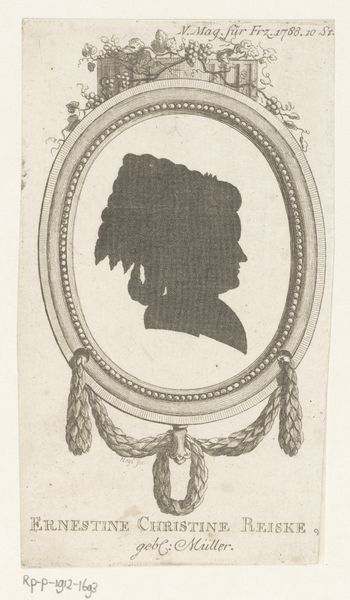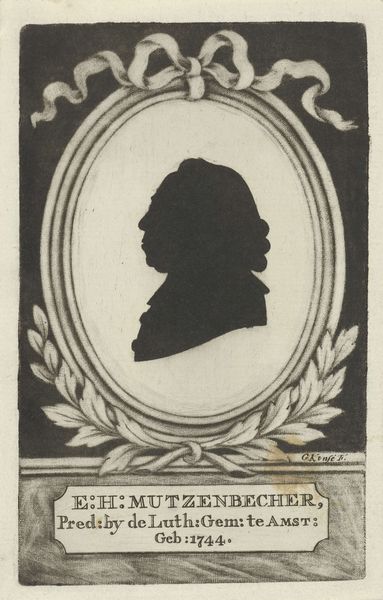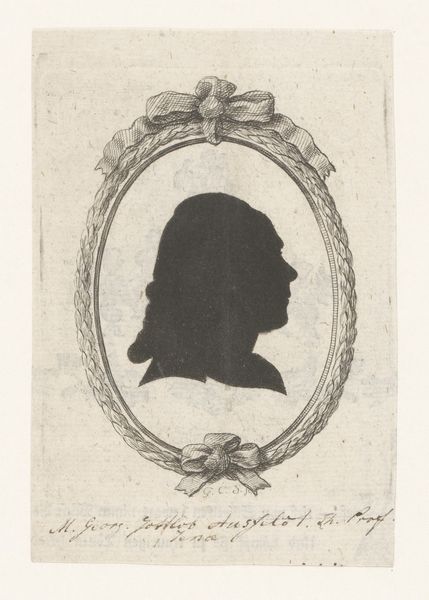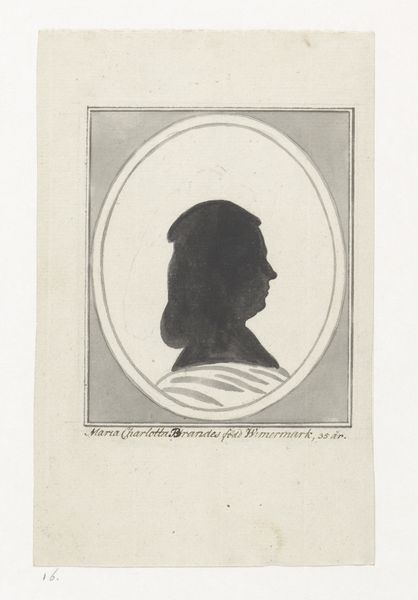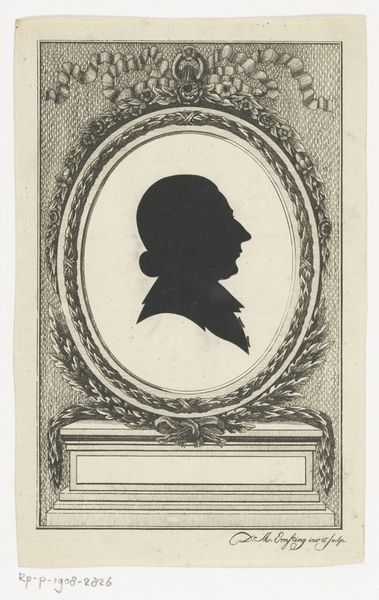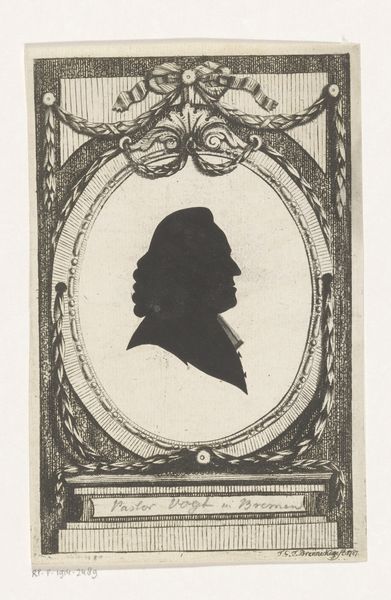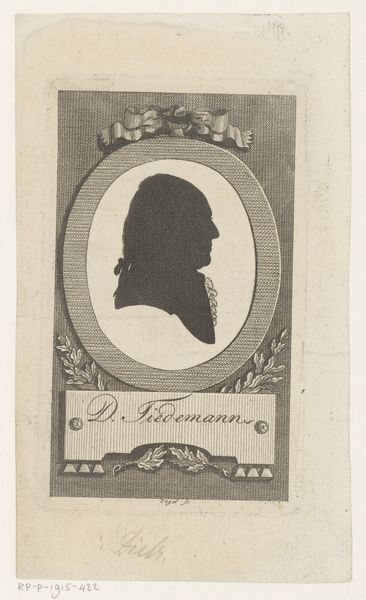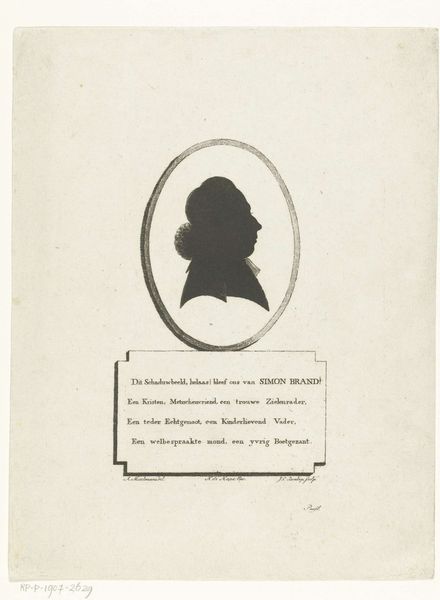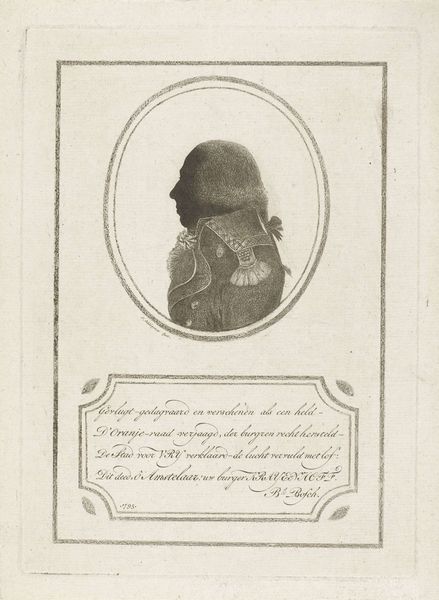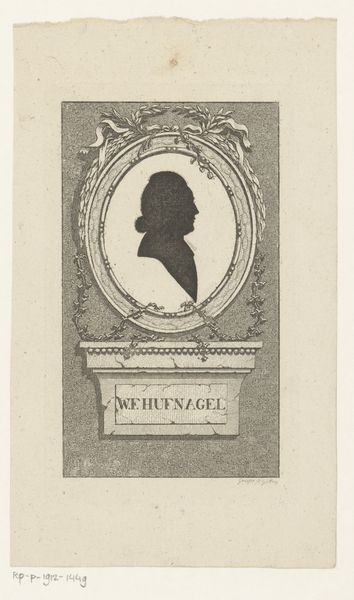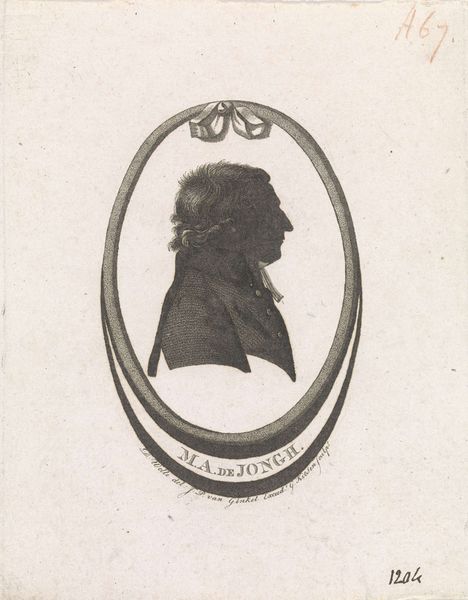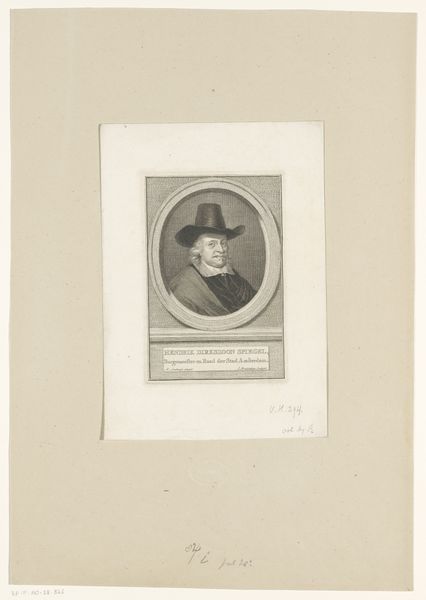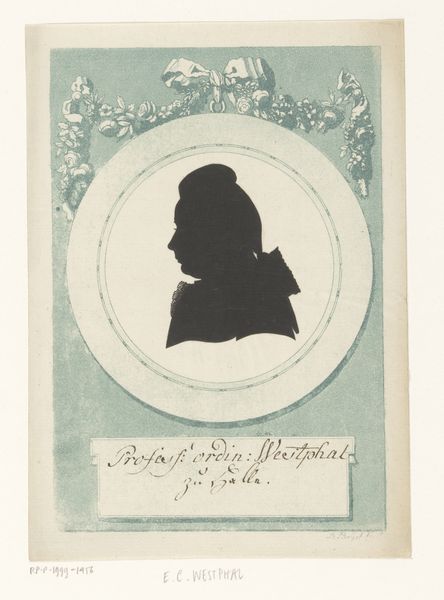
print, etching
#
portrait
# print
#
etching
#
figuration
#
line
#
history-painting
#
academic-art
Dimensions: 160 mm (height) x 107 mm (width) (plademaal)
Gerhard Ludvig Lahde created this print of Biskop Schönheyder using etching in Denmark, sometime between the late 18th and early 19th century. Silhouettes were very popular at this time. As a quick and affordable likeness, they democratized portraiture, which had previously only been available to the wealthy. They also became associated with physiognomy, a pseudoscience that claimed to reveal one's character from their outer appearance. Can we read anything from this man's profile? It's important to remember that these images always reflect the values and tastes of their time. The elaborate floral frame around Schönheyder’s image, for example, shows the influence of Rococo style and perhaps reflects the Bishop's social standing within the church. To understand this image better, we can look at the history of silhouette portraiture and the impact of the church in Danish society. The meaning of art lies in its historical context.
Comments
No comments
Be the first to comment and join the conversation on the ultimate creative platform.
